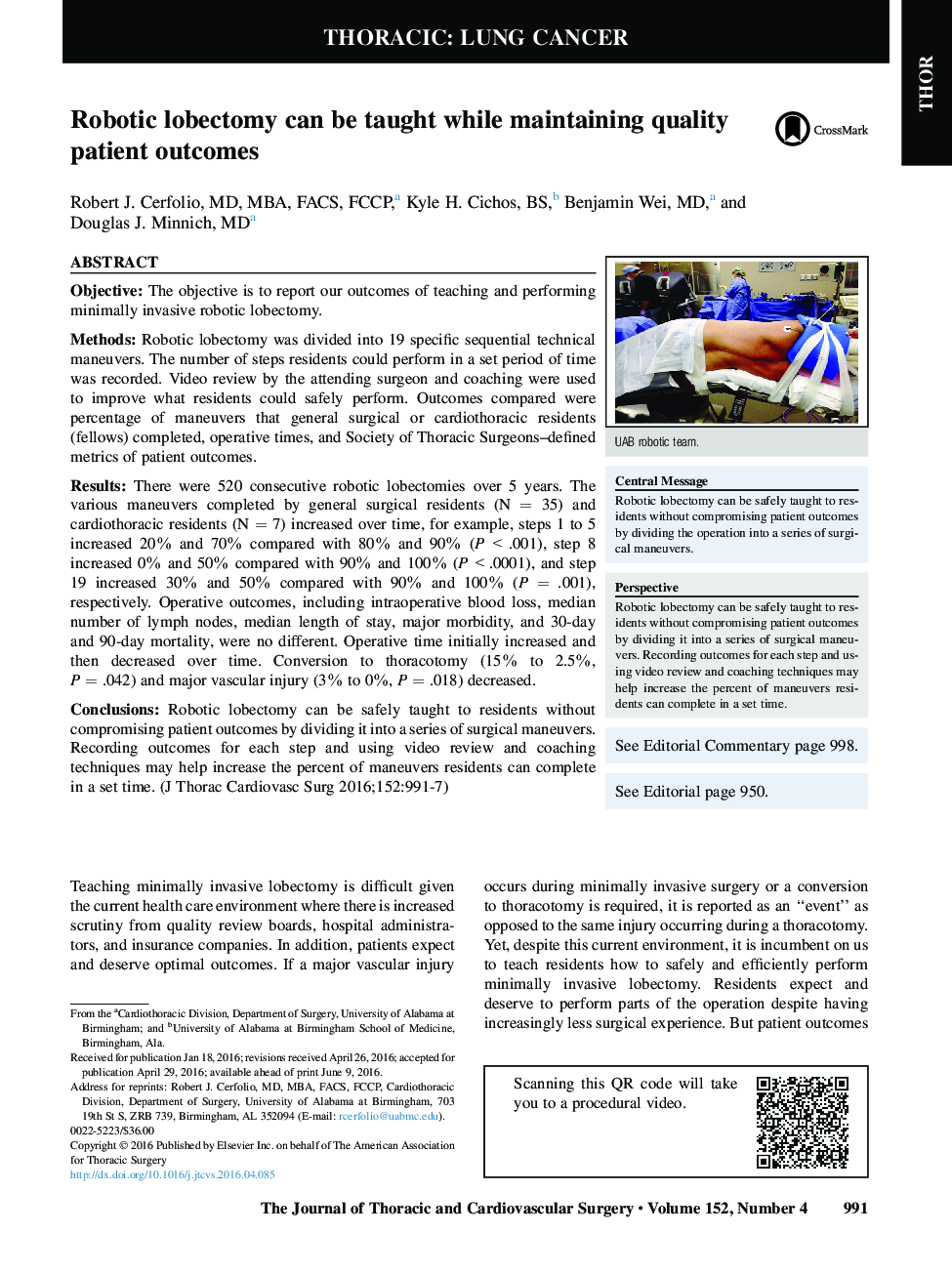| Article ID | Journal | Published Year | Pages | File Type |
|---|---|---|---|---|
| 2978588 | The Journal of Thoracic and Cardiovascular Surgery | 2016 | 7 Pages |
ObjectiveThe objective is to report our outcomes of teaching and performing minimally invasive robotic lobectomy.MethodsRobotic lobectomy was divided into 19 specific sequential technical maneuvers. The number of steps residents could perform in a set period of time was recorded. Video review by the attending surgeon and coaching were used to improve what residents could safely perform. Outcomes compared were percentage of maneuvers that general surgical or cardiothoracic residents (fellows) completed, operative times, and Society of Thoracic Surgeons–defined metrics of patient outcomes.ResultsThere were 520 consecutive robotic lobectomies over 5 years. The various maneuvers completed by general surgical residents (N = 35) and cardiothoracic residents (N = 7) increased over time, for example, steps 1 to 5 increased 20% and 70% compared with 80% and 90% (P < .001), step 8 increased 0% and 50% compared with 90% and 100% (P < .0001), and step 19 increased 30% and 50% compared with 90% and 100% (P = .001), respectively. Operative outcomes, including intraoperative blood loss, median number of lymph nodes, median length of stay, major morbidity, and 30-day and 90-day mortality, were no different. Operative time initially increased and then decreased over time. Conversion to thoracotomy (15% to 2.5%, P = .042) and major vascular injury (3% to 0%, P = .018) decreased.ConclusionsRobotic lobectomy can be safely taught to residents without compromising patient outcomes by dividing it into a series of surgical maneuvers. Recording outcomes for each step and using video review and coaching techniques may help increase the percent of maneuvers residents can complete in a set time.
